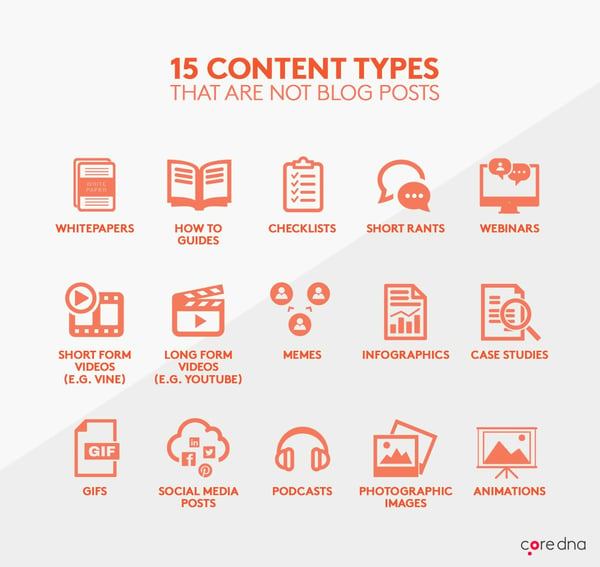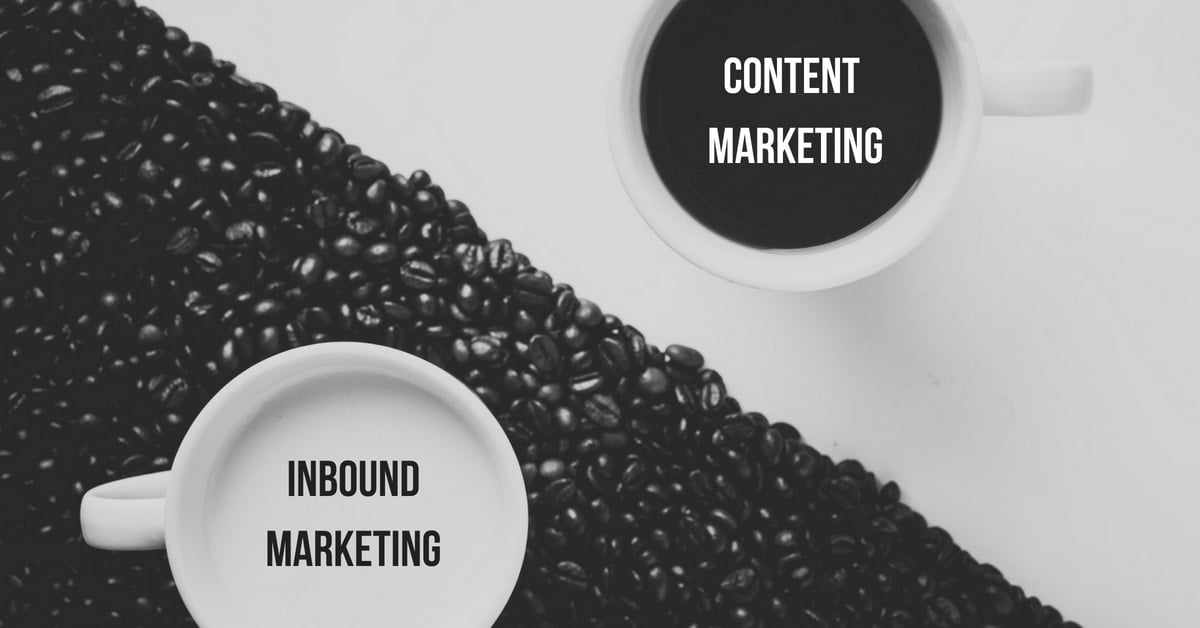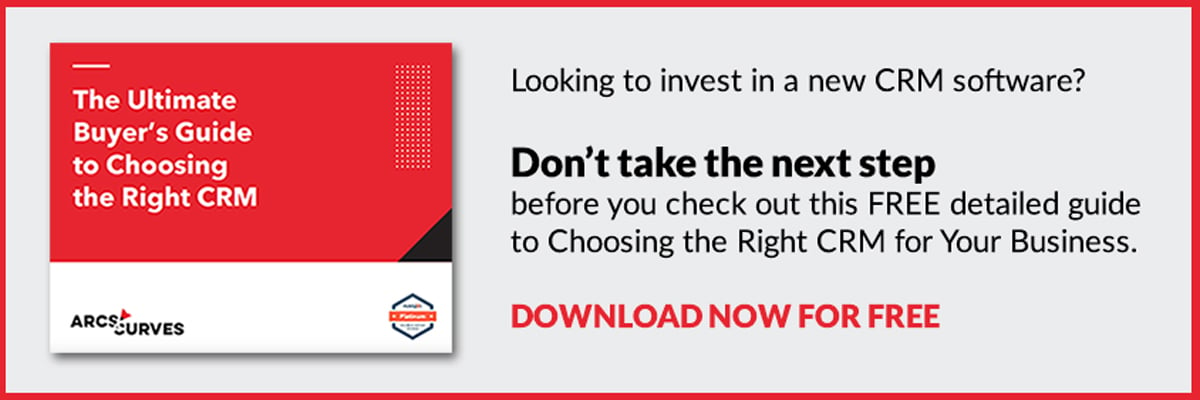.jpg?width=889&name=Inbound%20Marketing%20vs%20CM%20(1).jpg)
Reading the title of this blog might provoke you to think,
“Hold on! Isn’t content marketing and inbound marketing the same thing?”
It might also make you wonder about the purpose of this article, especially because the term “inbound marketing” hasn’t really picked up in the Middle Eastern region.
The point is, If you still think that inbound and content marketing are just 2 different fancy terms for the same type of marketing, this article is exactly for you.
This article is also for curious marketers and entrepreneurs like you, who have had multiple encounters with both these terms but have never gotten the chance to understand these marketing terms in detail, and what they truly symbolize.
There are multiple components in an all-star marketing strategy and in order to attract your target audience and convince them to purchase from you, you must understand how to transfer them seamlessly through the marketing-sales funnel.
Here's what a simple sales funnel looks like, based on your customers' purchase journey.
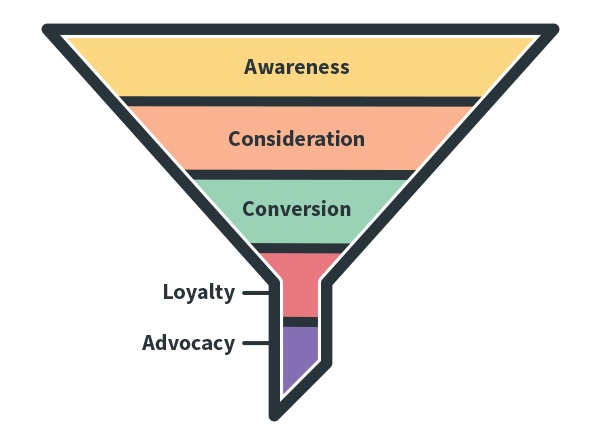
To enable this, you’ll need the help of various marketing techniques to get conversions and in turn, generate revenue.
Inbound Marketing paired with Content Marketing is the most-preferred form of funnel-based marketing because of an increasing dependence on trust-based choices and the nature of the products and services being sold.
Although you might confuse them for one another, both inbound and content have their own goals, applications, differences and similarities.
Regardless of the differences between each, if you want to get the best value for your money, you need to leverage the benefits of both content marketing and inbound marketing simultaneously.
I’ve split this article into 3 parts to help you fully understand both terms and their nuances.
- Definition of Content Marketing & Inbound Marketing
- What Differentiates them?
- Their Relationship and How They Work Hand-in-Hand
Let’s start with the..
Definition of Content Marketing & Inbound Marketing
So, what is Content Marketing?
Content marketing can mean different things to different marketing teams.
In the broadest sense, content marketing simply means, using content to market products and services.
It can be designed for online use, such as blog posts, infographics, videos, and SlideShares or offline use in the form of brochures and print media.
When most people say 'content marketing', they're thinking of content that's created for online use to drive website traffic for marketing.
Sometimes it goes a little further extending into downloadable content offers such as white-papers or ebooks.
Joe Pulizzi, founder of the Content Marketing Institute, sums up content marketing as follows:
“Content marketing is a strategic marketing approach focused on creating and distributing valuable, relevant and consistent content to attract and retain a clearly-defined audience — and, ultimately, to drive profitable customer action.”
Inbound marketing agencies like us, execute content marketing projects for ourselves and our clients.
This article itself is a piece of content marketing.
Our strategy is to create valuable content that's optimized for SEO, is visually compelling, targeted to the correct audience, and highly shareable.
This content then gets plugged into an inbound marketing process.
So, if marketing using content is content marketing, then..
What is Inbound Marketing?
Although I’ve written about inbound marketing in great detail, I’ll still add the functional definition here for the sake of continuity and completeness.
Inbound marketing is a set of tools, technologies, and processes that work together to drive traffic to a website, capture leads, and work to convert those leads into customers.
Content is an essential part of that - your content is what drives traffic to your blog, social sites, or other pages.
The illustration below demonstrates how the inbound marketing machine actually works.
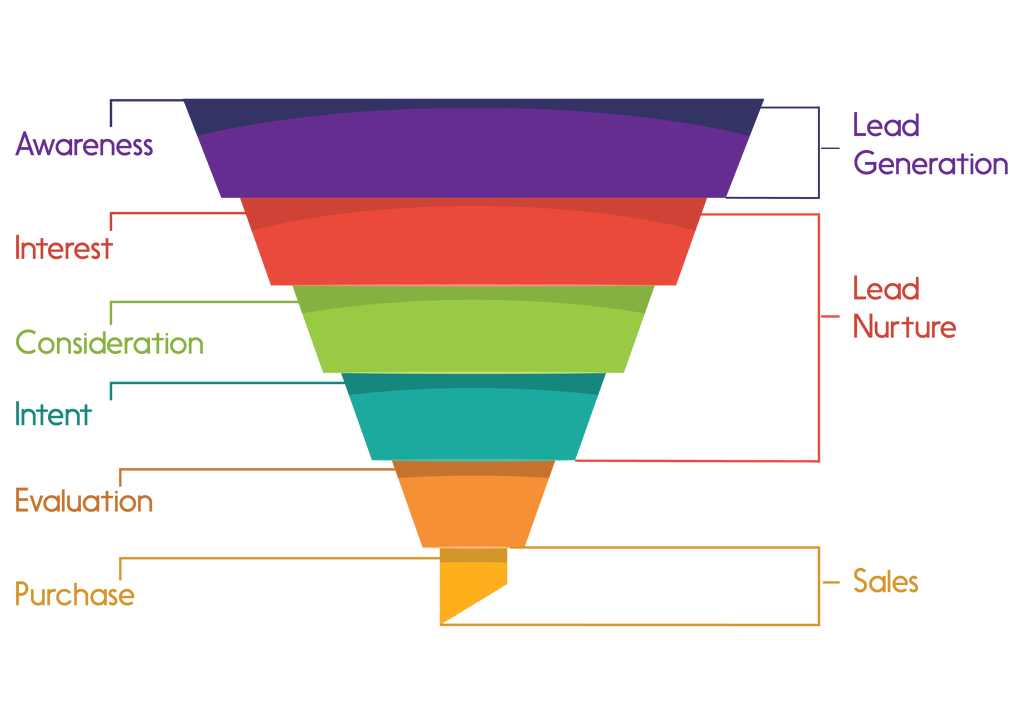
The inbound process is a self-sustaining one.
It involves researching keywords that your target customers use, to create content that has the potential to rank better for those topics and get found when your customers are looking for a solution.
This marketing strategy helps in generating leads faster and more appropriately.
Since inbound marketing also includes marketing automation, you can automate simple, but time-consuming follow-up tasks for hot leads in the pipeline.
By doing so, your salespeople get more time to monetize mature leads while newer prospects are already taken care of using the inbound marketing mechanism.
Inbound Marketing vs Content Marketing: What Differentiates them?
Content marketing involves creating and distributing content across multiple channels—for example, writing an ebook, sharing it on social media, and ensuring that it is read and shared by those who will find it applicable.
Inbound marketing, however, focuses on everything before and after content marketing.
For example, building a website, adding that piece of content on it, designing an attractive enough call to action, and ensuring follow-up communication to convert a lead into a sale.
That’s inbound marketing explained in a sentence.
In fact, it wouldn’t be wrong to say that content marketing is part of an inbound marketing strategy. Inbound marketing is the machine that transforms content into something that benefits the business, not just the customer.
Content marketing is just one part of inbound, simply because of the scope of work involved.
In other words, although content marketing focuses on building online relationships using content, inbound marketing focuses on the “bigger picture” activities and methods to make help that content convert into a sale.
So, while both marketing methods are non-interruptive, and as Seth Godin referred to them as “permission marketing” techniques, their differences help marketers and entrepreneurs to draw the line and allocate organizational resources effectively.

Both may have the same end goal, but the action steps are different.
I hope that was helpful enough to make sense of the Inbound Marketing vs Content Marketing argument.
The Relationship between Inbound Marketing & Content Marketing
Inbound marketing and content marketing strategies are similar because their main goal is to understand customers and create content of various forms to satisfy their needs.
Both involve a more holistic view of marketing that’s non-interruptive, and operate on the basis of trust and relationship with customers.
Marketing expert Mike Lieberman explains how content is a key piece of the larger inbound marketing strategy. He writes,
“Inbound marketing is a metrics- and result-driven methodology, so you want content to drive results.
In essence, your content marketing is going to be tightly integrated with your conversion strategy. Inbound produces results by using content to turn website visitors into leads, so the focus is on optimizing that content and that conversion experience.”
Inbound needs content to work.
Content needs inbound marketing tactics to fully amplify its reach and effectiveness.
So it wouldn’t be wrong to say that inbound marketing and content marketing work together as components.
Content pieces such as blog articles, long-form content like eBooks, social media posts and website copy are required to completely utilize the power of inbound marketing.
Inbound marketing is a metrics- and results-driven methodology, and that’s why you need content to drive results. In other words, your content marketing tactics should be integrated with your conversion strategy to deliver the best results.
The infographic below lists down the major components of Inbound Marketing.
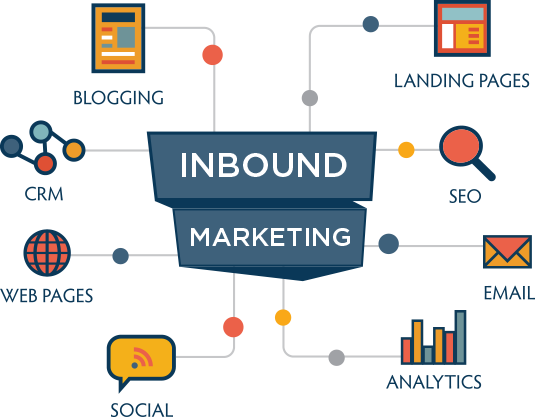
Are you now convinced that there's more to inbound marketing than just content :) ?
Since inbound marketing produces results by using content to turn website visitors into leads, the focus is on optimizing that very content and conversion experience.
Content marketing is just one piece of a complete inbound marketing strategy. Yes, you need content marketing, but you need a whole host of other inbound marketing tactics to deliver results.
Not all inbound marketing is content marketing, but content marketing is part of all inbound marketing.
Inbound Marketing vs Content Marketing: Which one to choose?
If you simply want to write some content, put it on your website and use it to attract targeted audiences, you could do that – but remember, you’d only be doing half the job.
It would be similar to a doctor diagnosing your symptoms without treating you.
Content marketing has the potential to attract and retain new clients, if it’s deployed as a part of an inbound marketing campaign.
Publishing tons of content, blogs and ebooks without a strategic marketing goal in mind and expecting leads in return would be too far-fetched without the power of inbound marketing.
Another way to look at this is:
If your goal is to improve your website visitors' experience by giving them more content to read, then content marketing might be just the thing for you.
But if your goal is to build a repeatable, scalable, predictable lead-generation machine that kicks in leads month over month, then inbound marketing, with all its components, might be a better option for your company.
Here's a simple illustration of an inbound marketing machine and how it functions using content.
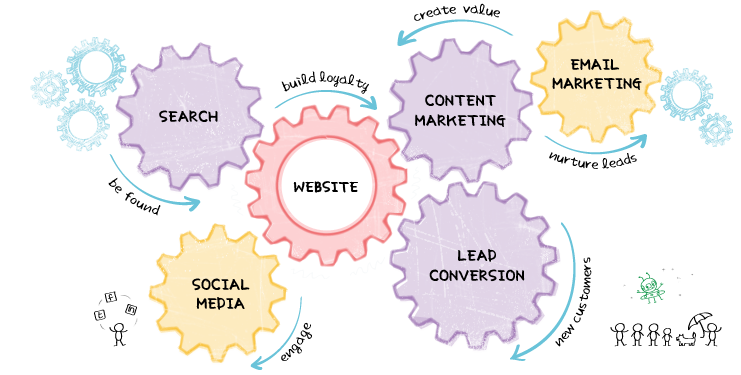
Pulizzi also explains the role of content marketing as one smaller piece of a larger marketing puzzle:
“Content marketing is not a standalone marketing technique that can thrive in a vacuum. Rather, it’s something that needs to be integrated into your overarching marketing plan, as its principles will strengthen all your other marketing efforts.”
Conclusion
Inbound marketing and content marketing are vital elements of a trust-based marketing strategy.
Because of the non-intrusive nature of both tactics, they are more efficient at helping customers solve their problems through you, while developing trust for your brand.
So make sure that every blog post, video, or infographic you create as part of your content strategy should have a unique goal in mind.
Whether that is to increase brand awareness or convert leads, you must know what you need to accomplish with the content.
Most content marketing tactics focus on blogging and content creation, but inbound marketing encompasses a large variety of methods, from social media to blogs to video to marketing automation, lead nurturing, lead scoring, email subscription, list segmentation and beyond.
But one thing’s for sure, regardless of whether you choose inbound marketing or content marketing, or a hybrid of the two tactics, or a unique marketing technique, you’ll definitely be needing tons of content.
Quality, non-fluffy content.
I'd like to end this article with this really useful infographic by core dna:
